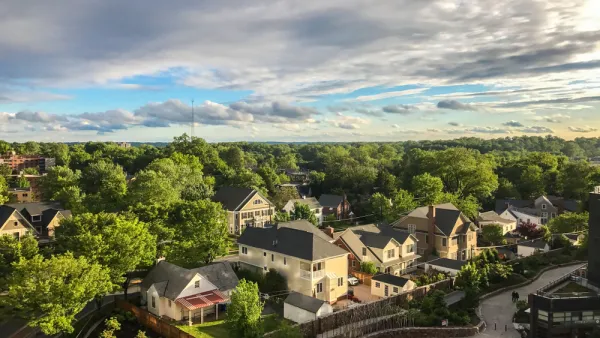Rent control is a popular response to the ongoing housing affordability crisis in many parts of the United States, but there is still a chorus of economists and planners who argue that rent control can do more harm than good to housing affordability.

Bill Lindeke writes for the twin cities sidewalks blog to make the case that the Housing Equity Now Saint Paul (HENS) rent control proposal, which would cap rent increases at 3 percent annually, would stop new housing from being built—a "de facto ban on housing," as it's described here.
Earlier this month, Lindeke reported for the MinnPost that St. Paul voters are faced with the prospect of approving the country's most aggressive rent control policy in the November election. To recap the summary of the HENS proposal provided in that article:
The law would cap rent increases for all of the city’s 65,000 rented homes at 3% per year, but includes a complicated list of factors that allow landlords to apply for a variances — things like property taxes, maintenance issues, capital improvements (only if needed to bring a building to code), and a few others. The process for applying for the variances is yet to be determined. The ordinance exempts only subsidized housing from the caps.
In the blog post for twin cities sidewalks, Lindeke explains that the question that keeps coming up since the MinnPost article is as follows: "Why does a 3% rent cap stop new housing from being built?"
Lindeke's answer, which you should click through below to read in full, hinges on
- The difference between landlords and developers: "3% is usually fine for a landlord but a huge limit for someone leasing out a new building."
- Inflation: "If inflation is close to or higher than 3%, you're just plain screwed. Not only can’t you move rents around to fill a building, you're actually forced to lower rents in real dollars."
The 3 percent cap on rent therefore, according to Lindeke, "greatly increases the risk of loans for new housing construction."
FULL STORY: Why the 3% Rent Cap Stops New Housing Construction

Analysis: Cybertruck Fatality Rate Far Exceeds That of Ford Pinto
The Tesla Cybertruck was recalled seven times last year.

National Parks Layoffs Will Cause Communities to Lose Billions
Thousands of essential park workers were laid off this week, just before the busy spring break season.

Retro-silient?: America’s First “Eco-burb,” The Woodlands Turns 50
A master-planned community north of Houston offers lessons on green infrastructure and resilient design, but falls short of its founder’s lofty affordability and walkability goals.

Test News Post 1
This is a summary

Analysis: Cybertruck Fatality Rate Far Exceeds That of Ford Pinto
The Tesla Cybertruck was recalled seven times last year.

Test News Headline 46
Test for the image on the front page.
Urban Design for Planners 1: Software Tools
This six-course series explores essential urban design concepts using open source software and equips planners with the tools they need to participate fully in the urban design process.
Planning for Universal Design
Learn the tools for implementing Universal Design in planning regulations.
EMC Planning Group, Inc.
Planetizen
Planetizen
Mpact (formerly Rail~Volution)
Great Falls Development Authority, Inc.
HUDs Office of Policy Development and Research
NYU Wagner Graduate School of Public Service




























